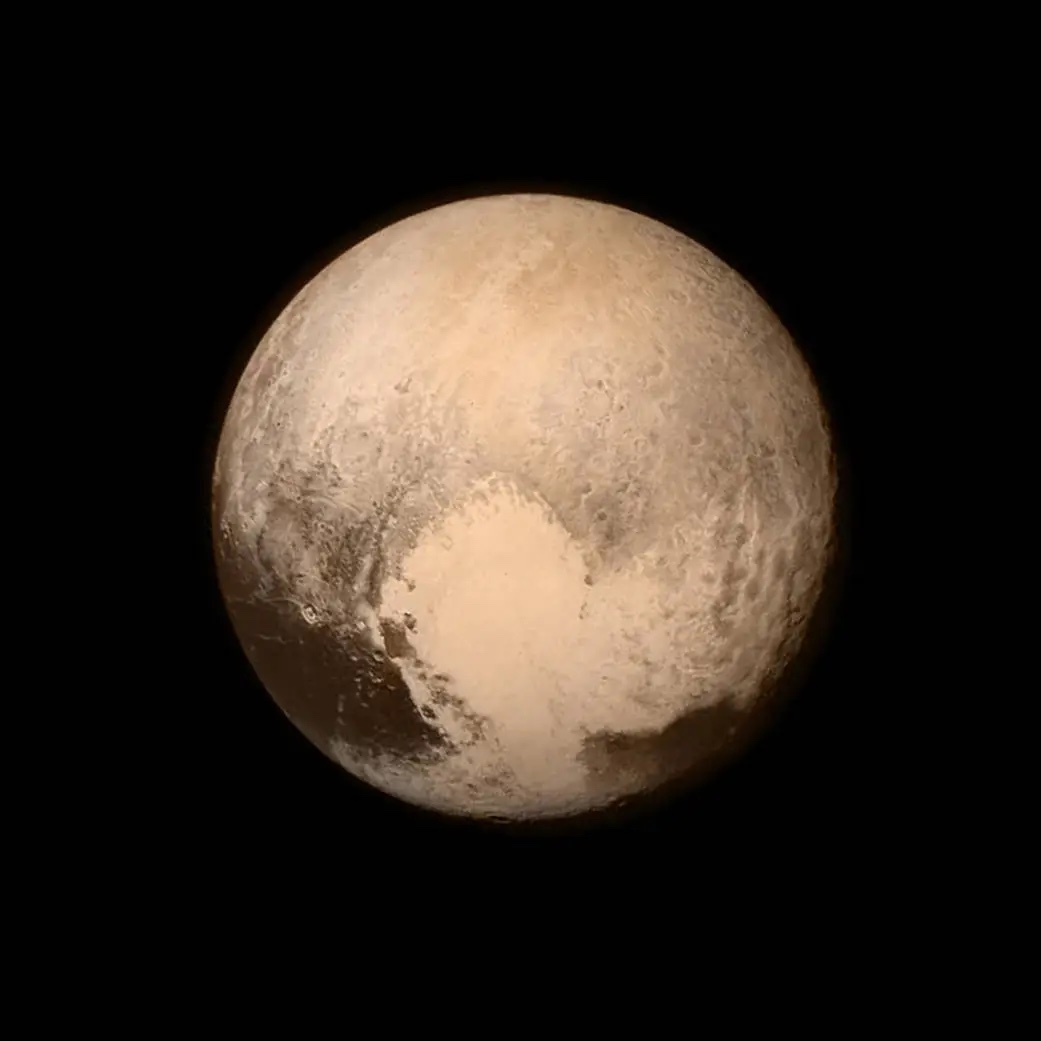
Key Takeaways:
When NASA released images of Pluto in 2015 taken by the New Horizons spacecraft, many were captivated by the dwarf planet’s heart-shaped feature, now called Tombaugh Regio. And now the mystery of how this “heart,” which is nearly 1,000 miles (1,600 kilometers) across, came to be may be solved. A recent study in Nature Astronomy reveals how the western half of the heart, known as Sputnik Planitia, is the result of a massive impact. Based on simulations, the team suggests a planetary body roughly the size of Arizona from north to south collided with Pluto at a slow speed, creating the tear-shaped area.
“The formation of Sputnik Planitia provides a critical window into the earliest periods of Pluto’s history,” said study co-author Adeene Denton, a planetary scientist at the University of Arizona, in a press release. “By expanding our investigation to include more unusual formation scenarios, we’ve learned some totally new possibilities for Pluto’s evolution, which could apply to other Kuiper Belt objects as well.”
The team also discovered that a deep ocean might not hide beneath Pluto’s icy surface, after all, by providing an alternative explanation for why the heart-shaped feature lies near the small world’s equator, rather than having moved toward the pole, as would be expected.

Deciphering the past
Sputnik Planitia consists of glacial plains of nitrogen ice. It is lower in elevation than the rest of the dwarf planet by 2.5 miles (4 km).
The team used computer simulations to model the impact on Pluto. The simulations confirmed that instead of a head-on collision, the impact hit at an oblique angle to create the shape we see today. And, rather than sinking into the world as might be expected, the impactor’s remains stayed littered on the surface. “Pluto’s core is so cold that the rocks remained very hard and did not melt despite the heat of the impact, and thanks to the angle of impact and the low velocity, the core of the impactor did not sink into Pluto’s core but remained intact as a splat on it,” said Harry Ballantyne, an astrophysicist at the University of Bern and the study’s lead author.
Furthermore, the simulations suggested that Pluto may not have the substantial subsurface ocean that has been proposed for the tiny world. This ocean has been suggested in part to explain why Tombaugh Regio is near the equator, rather than the pole, as would be expected after time. That’s because a depression with less mass than the surrounding area, such as the heart, should have moved toward the body’s pole. An ocean just beneath the surface, however, would bulge up under the thinner ice of Tombaugh Regio, lending it heft and keeping it near the equator.
Instead, the team found that much of the impactor’s mass could have sunk into Pluto’s core, giving the area enough mass to stay put without the need for a subsurface ocean, or at least a substantial one. “This novel and inventive origin for Pluto’s heart-shaped feature may lead to a better understanding of Pluto’s origin,” said Denton.









